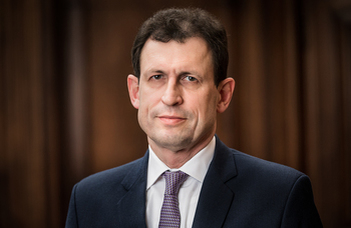European constitutional identity leaves room for the diversity of the Member States
How did your interest in the protection of public law and human rights evolve?
My interest in the protection of public law and human rights started with the fall of the Iron Curtain. At the end of my university studies, several states in Central and Eastern Europe adopted new democratic constitutions and joined the Council of Europe and the European Convention on Human Rights. During this period, in 1991, I had a unique opportunity to work as a young lawyer in the secretariat of the European Convention on Human Rights. A few years later, I could broaden my experience in an international environment, at the Max Planck Institute for Comparative Public Law and International Law in Heidelberg. These events and experiences fundamentally shaped my professional career and awakened my passion for the protection of human rights.
Your textbook on the European Convention on Human Rights and your commentary on the Convention are fundamental works in the discipline. The textbook was first published in 2003, and 2021 saw the 7th edition. Were there any developments in these eighteen years that could not be foreseen in 2003?
Some developments were already predictable, such as the growing importance of the Convention in the old member states such as Great Britain or Germany. However, the process that has taken place in Russia was completely unexpected for me. On the tenth anniversary of the adoption of the 1993 Russian Constitution, I assumed that Russia would remain a member of the community of European states and, within that, would make a long-term commitment to the protection of democracy and human rights. Still in 2013, on the twentieth anniversary of the constitution, I visited Russia and, despite the difficulties already apparent at that time, no one would have thought that nearly ten years later this country would no longer be the member of the Convention and the Council of Europe. But, of course, I cannot ignore either the negative developments that have taken place in the democratized countries since 1990. In 2003, I was still optimistic that the protection of human rights was moving on an upward trajectory. In the last ten years, however, my optimism has decreased.
Is there a common European constitutional law for the protection of human rights?
The international and particularly European protection of human rights was the response of civilized democracies to the horrors of National Socialism and the atrocities of Stalin’s dictatorship. This response stemmed from the constitutions of the Member States and from the experience of the Strasbourg Court’s case-law that has been consolidated over the decades. In my view, this represents a “European constitutional order”, at least in the area of procedural guarantees and freedoms such as privacy, suffrage, the freedom of expression, the freedom of the media, religious freedom, and the right to property.
Can the identity of EU law be determined? If so, can we define it in contrast with or based on the constitutional identity of the Member States?
Since we are talking about a federal structure, the struggle for the identity of EU law is not surprising at all. Different sub-legal systems and sub-constitutions clash, and the task of lawyers working with them is to resolve competently the tensions and contradictions existing among them. However, based on the history of European integration and the case- law of the vast majority of constitutional courts, as well as the case-law of the Courts of Strasbourg and Luxembourg, we can identify the core of the common European constitutional principles which is beyond the authority of the individual member states, their governments, and their courts. These include, above all, a model of democracy based on the separation of powers and a state governed by the rule of law where the courts are truly independent.
The number of the courts, the specific authorities of the Constitutional Court (provided the court is not weakened on purpose), the relationship among the parliament, the governments, and the head of state, as well as the strength of the elements of direct democracy belong to the national identities of the Member States, which can work within the frames of European constitutional principles. This reveals the image of a European constitutional identity, in which the fundamental elements are fixed but which also leaves room for the diversity of the Member States, and the latter is guaranteed by the principle of subsidiarity in EU law.
In addition to your intense scientific activities, you have been President of the Austrian Constitutional Court since 2020. How can this important public-service task be reconciled with creative work in a scholarly field?
The duties of a court president take up a lot of time indeed, and this recognition lies at the heart of this question. I need to be creative to set aside some blocks of time in a week or a year from the day-to-day life of the court when I can focus on those fundamental issues that are the drivers of public law in Europe today.

